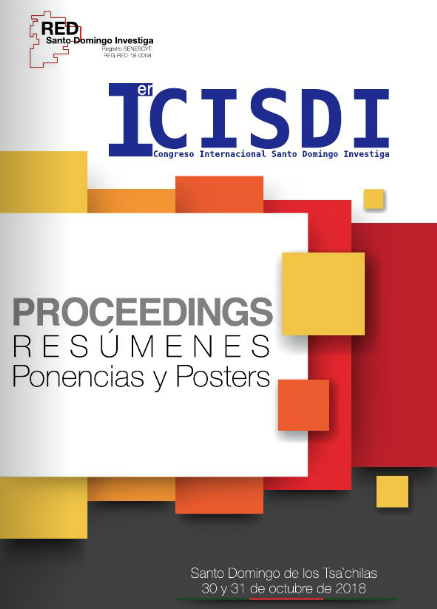Comparación: Factores de riesgo laboral en la cosecha forestal, entre manual y mecanizada
Ing. José Miguel Vásquez A., MSc.
IST Tsa´chila, Santo Domingo, Ecuador
Esta dirección de correo electrónico está protegida contra spambots. Necesita activar JavaScript para visualizarla.
Ing. Astudilllo Martínez Washington Javier
ISTT, Santo Domingo, Ecuador
Esta dirección de correo electrónico está protegida contra spambots. Necesita activar JavaScript para visualizarla.
Resumen
La actividad forestal a nivel mundial tiene un gran porcentaje de siniestros y reporte de accidentes laborales, quedando como la tercera actividad más peligrosa que han ocasionado la muerte de los trabajadores. Según la Organización Internacional de Trabajo, (OIT, 2012), se producen 42 accidentes y cinco enfermedades ocupacionales por cada 1000 trabajadores, 8,5 muertes por cada 100000 trabajadores, lo que evidencia que a nivel forestal el riesgo se concentra más en la actividad de cosecha por parte de los motosierristas y operadores.
En el Cantón Pedro Vicente Maldonado se realiza la cosecha forestal expuesta al alto riesgo laboral y de acuerdo al art. 326 numeral 5 de la Constitución del Ecuador donde se menciona que “Toda persona tendrá derecho a desarrollar sus labores en un ambiente adecuado y propicio, que garantice su salud, integridad, seguridad, higiene y bienestar.”, se ve la necesidad de evaluar los siguientes riesgos: Riesgo físico por el ruido, evaluado con la medición de un sonómetro; riesgo mecánico por golpes y cortes, evaluado con la metodología de William Fine y riesgo ergonómico con posturas forzadas y movimientos repetitivos, evaluado con la metodología de Tareas Repetitivas del Instituto de Biomecánica de Valencia (IBV) Posturas Forzadas OWAS
La empresa entre los años 2014 al 2016 tiene un promedio de 12 accidentes graves en las actividades de tumba y troceado, es aquí la oportunidad de no solo pensar en el rendimiento de la producción y llegar a hacer una comparación del grado de peligrosidad entre los factores de riesgos encontrados en la cosecha forestal manual y comparar con los factores de riesgo encontrados en la cosecha forestal mecanizada.
Se comparó que en la cosecha manual se expone a un ruido promedio de 84 db (decibeles) y en la cosecha mecanizada a 67db; La probabilidad a golpes y cortes de 9 a 1,75; Los movimientos repetitivos de 4 a 3 y el trabajo forzoso de 7,75 a 1 siendo el primer dato de la cosecha manual y el segundo de la cosecha mecanizada. Con estos resultados también se obtiene que los índices de accidentabilidad bajaron de 12 accidentes promedio a 6 accidentes en el año 2017 donde la cosecha fue mecanizada.Con estos resultados podemos evidenciar que la cosecha mecanizada a más de aumentar la producción en menos tiempo, atenúa los índices de accidentabilidad y se recomienda a las empresas forestales cambiar las estrategias de cosecha manual a la cosecha mecanizada.
Palabras claves: seguridad, prevención, accidentes, factor de riesgo, riesgo físico, riesgo mecánico, riesgo ergonómico, cosecha forestal
Abstract
Forestry activity worldwide has a large percentage of accidents and reports of accidents at work, remaining the third most dangerous activity that has caused the death of workers. According to the International Labor Organization, (ILO, 2012), there are 42 accidents and five occupational diseases per 1000 workers, 8.5 deaths per 100,000 workers, which shows that at a forest level the risk is more concentrated in the activity of harvest by chainsaw operators and operators.
In the Canton Pedro Vicente Maldonado the forest harvest is made exposed to high labor risk and according to art. 326, numeral 5 of the Constitution of Ecuador, which mentions that "Everyone shall have the right to carry out their duties in an adequate and propitious environment that guarantees their health, integrity, safety, hygiene and well-being." following risks: Physical risk due to noise, evaluated with the measurement of a sound level meter; mechanical risk due to bumps and cuts, evaluated with the William Fine methodology and ergonomic risk with forced postures and repetitive movements, evaluated with the Repetitive Tasks methodology of the Biomechanics Institute of Valencia (IBV) OWAS Forced Positions.
The company between 2014 and 2016 has an average of 12 serious accidents in the activities of tomb and chopping, here is the opportunity to not only think about the yield of production and get to make a comparison of the degree of dangerousness between the factors of risks found in manual forest harvesting and compare with the risk factors found in mechanized forest harvesting.
It was compared that in the manual harvest it is exposed to an average noise of 84 db (decibels) and in the mechanized harvest to 67db; The probability to blows and cuts from 9 to 1.75; The repetitive movements of 4 to 3 and the forced labor of 7.75 to 1 is the first data of the manual harvest and the second of the mechanized harvest. With these results, it is also obtained that accident rates decreased from 12 average accidents to 6 accidents in 2017 where the harvest was mechanized.With these results, we can see that the mechanized harvest more than increasing the production in less time, attenuates the accident rates and it is recommended to the forestry companies to change the strategies of manual harvesting to the mechanized harvest.
Keywords: safety, prevention, accidents, risk factor, physical risk, mechanical risk, ergonomic risk, forest harvest














